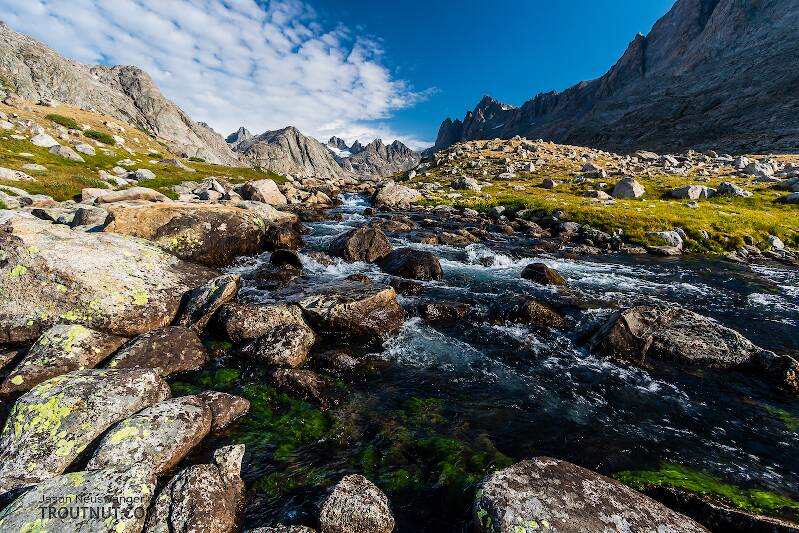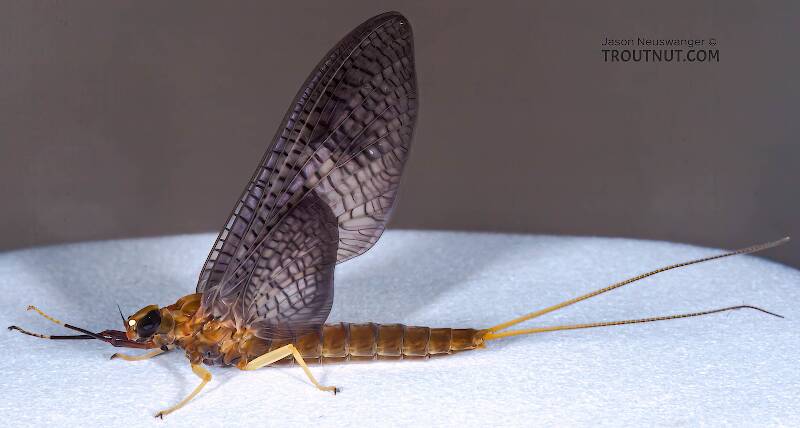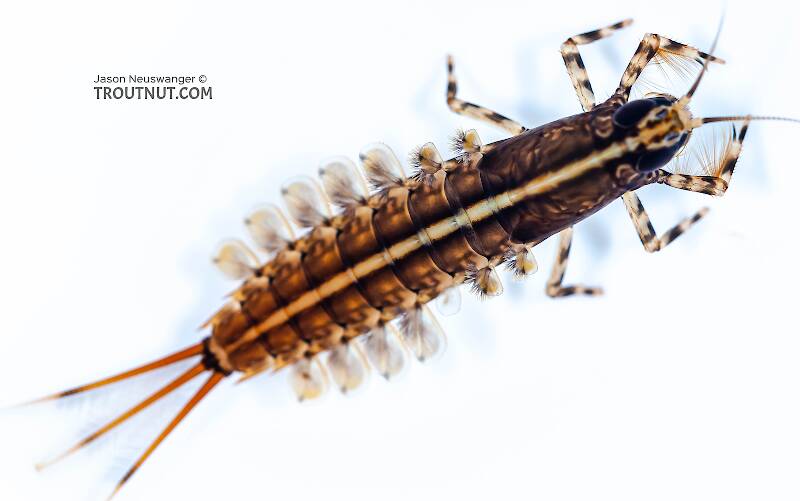
Blue-winged Olives
Baetis
Tiny Baetis mayflies are perhaps the most commonly encountered and imitated by anglers on all American trout streams due to their great abundance, widespread distribution, and trout-friendly emergence habits.
Featured on the forum

This specimen resembled several others of around the same size and perhaps the same species, which were pretty common in my February sample from the upper Yakima. Unfortunately, I misplaced the specimen before I could get it under a microscope for a definitive ID.

Troutnut is a project started in 2003 by salmonid ecologist Jason "Troutnut" Neuswanger to help anglers and
fly tyers unabashedly embrace the entomological side of the sport. Learn more about Troutnut or
support the project for an enhanced experience here.
Dark Red Quills
Like most common names,"Dark Red Quill" can refer to more than one taxon. They're previewed below, along with 10 specimens. For more detail click through to the scientific names.
Mayfly Genus Cinygmula
These are often called Dark Red Quills.
This is primarily a Western genus. Cinygmula ramaleyi is the most important species, producing good hatches in the West. Cinygmula reticulata may also be relevant, and I have seen a great spinner swarm from an unsung species, Cinygmula par, in the Washington Cascades.
There is only one Eastern species, Cinygmula subaequalis, and its importance is minor.
There is only one Eastern species, Cinygmula subaequalis, and its importance is minor.
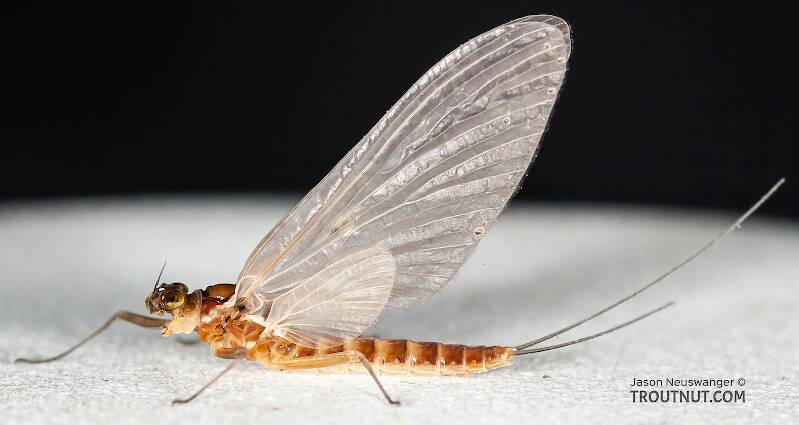
This dun is almost certainly of the same species as this nymph, as it hatched in my cooler from a nearly identical nymph.
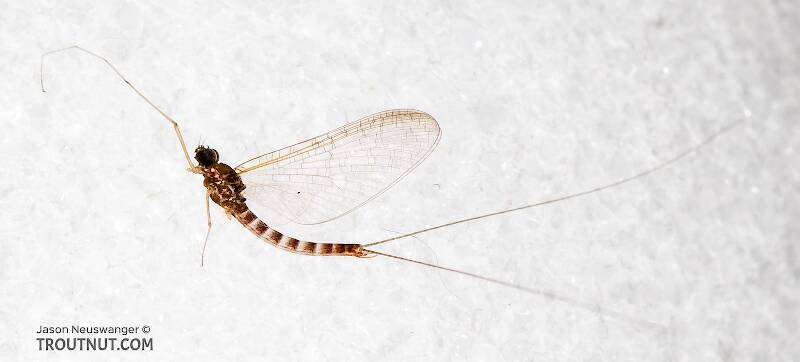
I'm unsure of the ID on this one; keys put it closest to Cinygmula reticulata, but I'm very doubtful of the species and not positive on the genus. Epeorus is another possibility, but I don't know which species it would be.
This one was collected in association with a female dun probably of a different family.
This one was collected in association with a female dun probably of a different family.
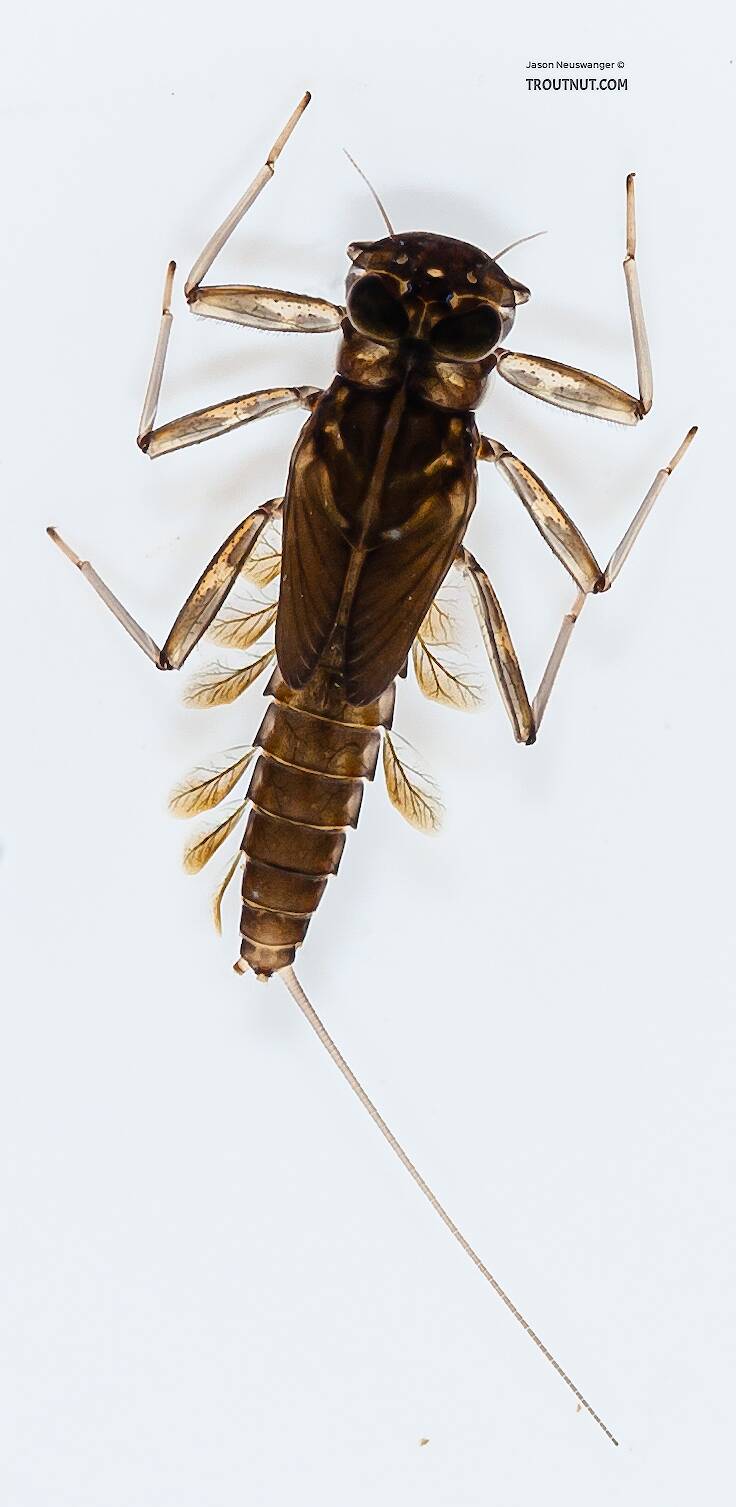
This nymph is almost definitely the same species as this dun, which hatched from a nearly identical nymph from the same collection.
See 38 more specimens...
Mayfly Species Rhithrogena impersonata
These are sometimes called Dark Red Quills.
This intriguing species has two distinct colors of nymphs, which were once considered to be different species. Most nymphs are a dark olive gray, but some are a surprisingly bright reddish brown. The red ones were once classified as Rhithrogena sanguinea. There is no apparent difference between the adults of the two varieties.

This was the only Rhithrogena specimen in a large sample of nymphs from a small Catskill stream. It looks virtually identical to Rhithrogena impersonata specimens collected in the Midwest, but I didn't get to check the distinguishing features under a microscope.
See 2 more specimens...
Mayfly Species Rhithrogena jejuna
These are sometimes called Dark Red Quills.
Mayfly Species Attenella attenuata
These are very rarely called Dark Red Quills.
This intriguing species has received a lot of attention in past angling books. Recent authors suspect that much of this credit was a case of mistaken identity, with Attenella attenuata receiving praise for the hatches of Drunella lata and Dannella simplex. Much of the credit was legitimate and accurate, but this species is no longer thought to be on par with its most popular cousins in Ephemerella and Drunella.
I have several specimens listed under this species, but I'm not positive the identification is correct.
I have several specimens listed under this species, but I'm not positive the identification is correct.
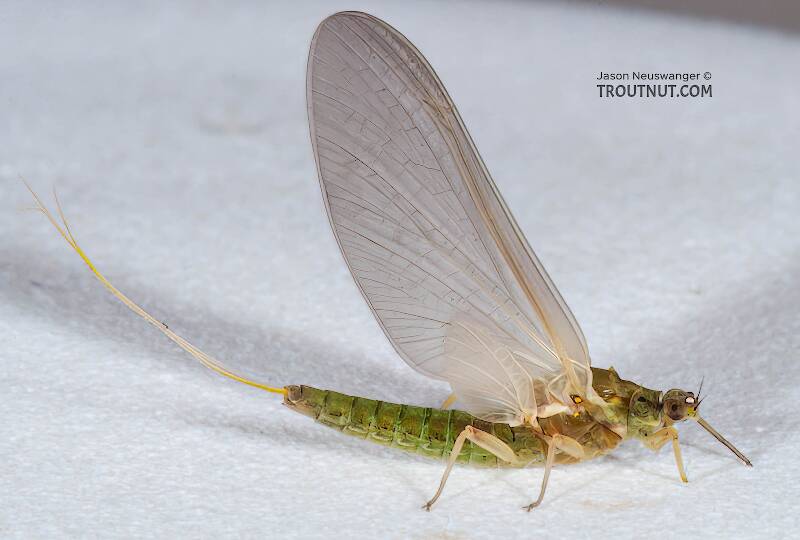
This specimen came from the same hatch as a male.
See 2 more specimens...
Mayfly Species Isonychia bicolor
These are very rarely called Dark Red Quills.
This is by far the most important species of Isonychia. Many angling books once split its credit with the species Isonychia sadleri and Isonychia harperi, but entomologists have since discovered that those are just variations of this abundant species.
See the main Isonychia page for more about these intriguing mayflies.
See the main Isonychia page for more about these intriguing mayflies.
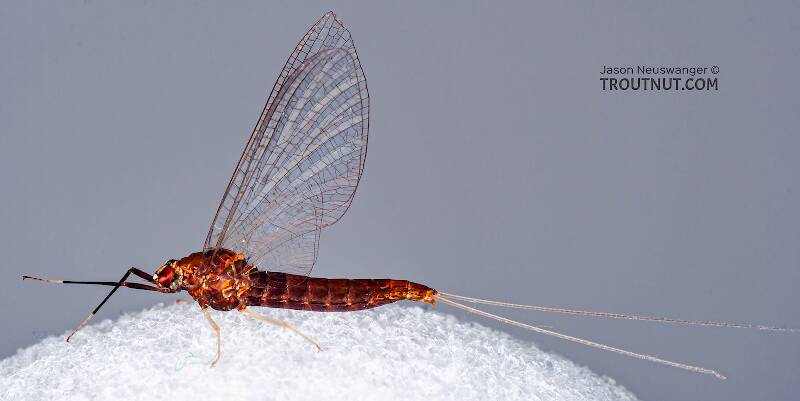
I collected this female together with a male.
See 16 more specimens...
Mayfly Species Cinygmula ramaleyi
These are very rarely called Dark Red Quills.
This can be the first mayfly of the season on high mountain streams in the western states, but emerges later in the season in Alaska. It is the most important species of Cinygmula for anglers.

This dun is almost certainly of the same species as this nymph, as it hatched in my cooler from a nearly identical nymph.
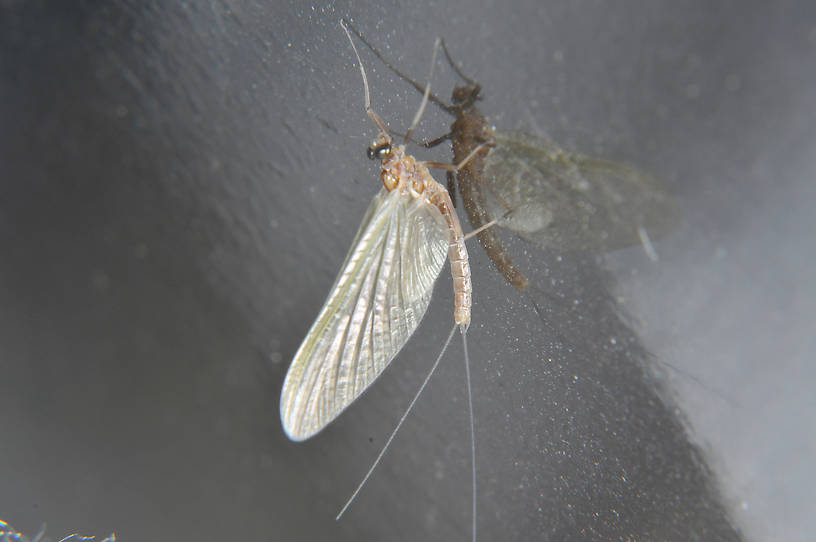
Adults were collected from the North Fork of the Touchet River at Touchet Corral, 21 Sept. One photo is the swarm of males over the stream about 3 PM, air temp about 66 degree.

This nymph is almost definitely the same species as this dun, which hatched from a nearly identical nymph from the same collection.
See 6 more specimens...
Mayfly Species Rhithrogena undulata
These are very rarely called Dark Red Quills.
This is one of the two most common species of Rhithrogena.
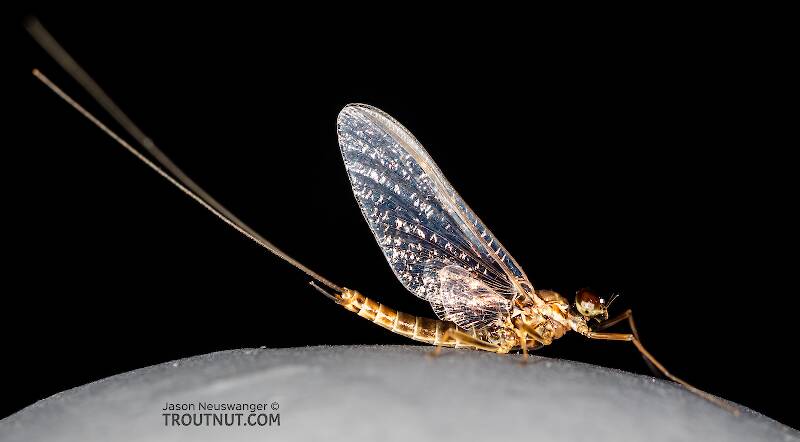
This male was collected at the same time as this female and is likely the same species.
It keys pretty clearly to Rhithrogena undulata using the key in Traver 1935, although the size is larger than expected for that species in that source.
It keys pretty clearly to Rhithrogena undulata using the key in Traver 1935, although the size is larger than expected for that species in that source.
See 1 more specimen...

